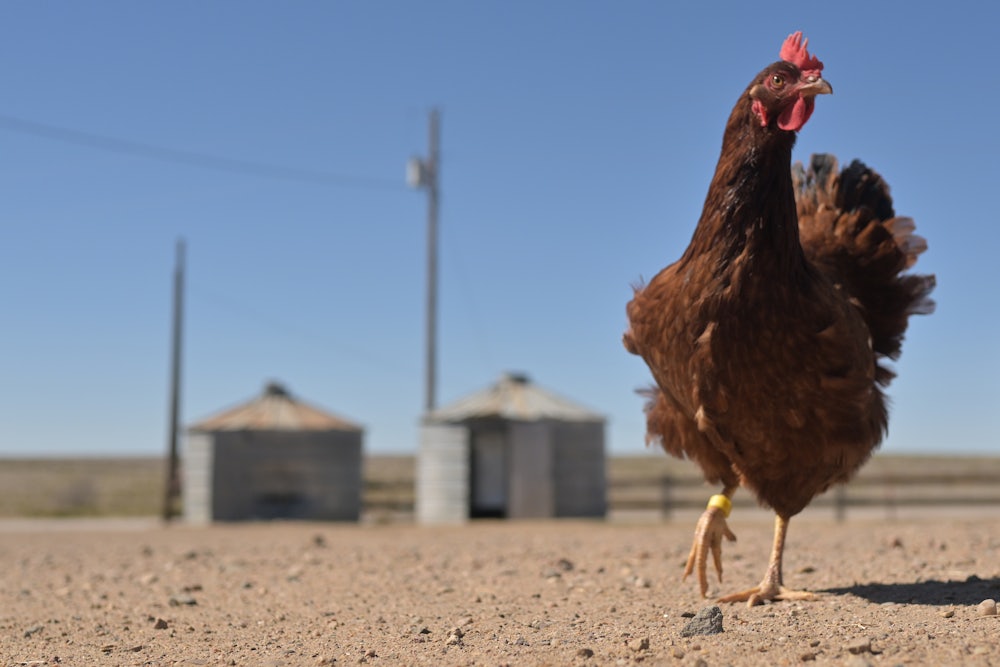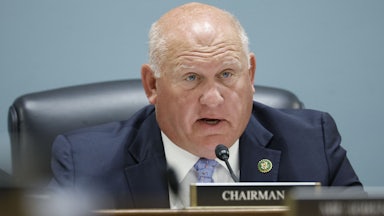Fielding phone calls from concerned growers has become a commonplace occurrence for Nick Levendofsky, the executive director of the Kansas Farmers Union. The upheaval in the U.S. Department of Agriculture since President Donald Trump took office in January has left many farmers with unfulfilled contracts and broken commitments. Grants that once offered vital financial lifelines have been frozen. Programs that once provided assistance and aid have been eliminated. Uncertainty about the future has become the bumper crop.
“It’s just been a barrage from the very beginning,” said Levendofsky of the changes made by the Trump administration. “We were getting phone calls from not just members of ours, but farmers and ranchers in general, saying, ‘What do we do?’”
He recalled a recent conversation with the owner of a vineyard in northeastern Kansas who had been promised a loan to build solar panels and an electric vehicle charger. But with USDA freezing funding for the renewable energy projects guaranteed by the Biden-era Inflation Reduction Act, the farmer was stuck with the bill for the already completed project.
“He had a $55,000 USDA-guaranteed loan that now USDA said, ‘We’re not going to pay,’” said Levendofsky.
In April, a federal judge ordered the Trump administration to release the previously authorized frozen funds. That same month, however, the USDA canceled the Partnerships for Climate-Smart Commodities, a separate grant program intended to promote sustainable farming and forestry practices. The administration repackaged that grant as “Advancing Markets for Producers,” with existing agreements under review.
The Maine Organic Farmers and Gardeners Association, or MOFGA, was among the organizations affected by these changes. The group had a multiyear grant from the Partnerships for Climate-Smart Commodities program, said executive director Sarah Alexander. Along with another Maine-based group, MOFGA was slated to work with 200 farms in the state to assess whether they met certain criteria to receive funds for improving climate resiliency.
“That money has gone away, and that’s been really devastating,” said Alexander. “That’s a really direct impact that’s both on our budget and work this year with our staff’s [ability] to provide direct training and technical assistance to those farms, but then also the farms ultimately losing out on that money.”
The USDA announced in March that it would issue up to $10 billion in relief for commodity producers for the 2024 crop year, and the White House has mulled additional financial assistance for farmers to mitigate potential effects from tariffs. During Trump’s first term, USDA doled out roughly $23 billion in aid to farmers amid retaliatory Chinese tariffs on certain American imports, including wheat, soybeans, and corn. Given the current uncertainty surrounding the tariffs that Trump can and may impose—and the status of ongoing trade negotiations with China—it’s unclear what kind of financial assistance farmers can expect this time around, if any.
But Erin Foster West, policy director at the National Young Farmers Coalition, said that programs intended to help commodity farmers have less of an impact for smaller-scale producers. Meanwhile, the USDA has eliminated the Local Food Purchase Assistance program, which connected small farmers to community food pantries and anti-hunger organizations, as well as the Local Food for Schools program, which allowed schools and childcare facilities to purchase food from local farms. West said that the LFPA had been particularly helpful for members of her organization at the beginning of their careers.
“Many were using that as sort of a bridge as they were growing or expanding, and didn’t expect to have that forever but expected to have it for maybe a few more years,” said West. “Now it feels like the rug has just been pulled out from underneath them without any notice, without any support, without any communication.”
Producers also highlight the stalling of farm bill negotiations in Congress as a major source of worry. Typically approved every five years, the farm bill governs the country’s nutrition, agricultural, conservation, and forestry policy and is historically passed on a bipartisan basis. However, the 2018 farm bill has been extended twice—most recently at the end of last year—and discussions among lawmakers on crafting the new measure have been largely stagnant.
Meanwhile, some of the agenda items that would typically be included in the farm bill are instead being addressed by the One Big, Beautiful Bill Act, the massive Republican legislative package including tax breaks and dramatic cuts to government spending. The bill, which narrowly passed in the House last week, slashes nearly $300 billion from nutrition programs, but includes roughly $60 billion for farm safety-net programs. The measure—which is moving through a process known as “budget reconciliation” to avoid the 60-vote threshold for approving legislation in the upper chamber—is now under consideration in the Senate.
The changes to SNAP include tightened work requirements, which the nonpartisan Congressional Budget Office has estimated would lead to more than three million recipients losing their benefits in an average month. The bill would also push more of the cost of SNAP onto states, which the CBO estimates could lead to reduced or loss of benefits for around 1.3 million people.
Alexander argued that the farm bill was the preferred venue for hashing out nutrition and farm policy. “They are two sides of the same coin because the food that we’re producing in this country should be what is feeding our citizens,” she said. “SNAP at its essence should be supporting what our farmers are producing.”
Farmers and their communities are thus concerned not only about changes in the USDA, but how that upheaval might be compounded by changes to SNAP. Nichelle Harriott, policy director at HEAL Food Alliance, a coalition of organizations that work directly with farming and food systems, said that member groups were now floundering amid the uncertainty on the executive and legislative level.
“We have a member in Georgia, for instance, who the entirety of their work is to ensure that vulnerable children in their communities have access to healthy nutrition. And of course, with the absence of federal funding to do that work—as well as the impending cuts of SNAP—they are really seeing increasing challenges,” said Harriott. If would-be SNAP recipients do not have the benefits to spend at their grocery stores, she said, and small producers also cannot share their crops, there will be “a lot of ripple effects in local communities.”
Levendofsky expressed frustration that many of the people who would be most affected by this double whammy of changes live in rural areas—both producers and SNAP recipients. Rural Americans have consistently higher rates of food insecurity, and non-metro areas have higher rates of participation in SNAP than their urban counterparts.
“We’re hurting the very people who have voted for so many of these folks in Congress, and even folks that voted for this administration,” said Levendofsky. “I’m nervous about what’s coming because I think, especially, the folks that supported this administration in the last election didn’t feel like they were going to be affected. I think they probably felt like this was, you know, a ‘safe’ bet or vote for them, and that it wasn’t gonna be a problem. Well, it’s about to be a problem.”










